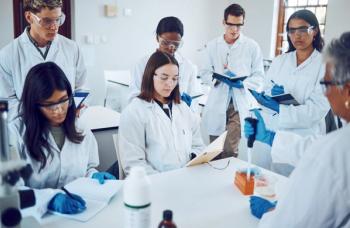
- November 2010 Cough & Cold
- Volume 76
- Issue 11
Pharmacy Guide: The Common Cold
The cold is one of the most common illnesses in the United States. It is a respiratory infection that can be caused by more than 200 different types of viruses. Approximately 30% of adult colds are caused by the rhinovirus. The term “cold” comes from a time before the discovery of viruses when people noticed the correlation between cold weather and the sickness.
Although there is now a better understanding of the viral nature of colds, evidence has shown that the environment and the weather can increase an individual’s susceptibility to respiratory infection. Inhalation of cold, dry air, especially during the “cold season,” which starts in late August and lasts until April, can reduce the effectiveness of mucus in the nasal passages that normally provides some protection against airborne particles and pathogens. This season also coincides with the school term, when the risk of transmission is increased due to the close proximity of children and their teachers.
It is estimated that 1 billion colds occur each year in the United States, with children contracting 6 to 10 colds annually. This number decreases as the individual grows older, and women tend to catch colds more often than men. If left untreated, complications like bacterial sinusitis and middle ear infection can occur.
Signs and Symptoms
Common symptoms of a cold include:
• Runny nose
• Congestion
• Sneezing
• Itchy throat
• Productive cough
• Headache
• Fever
These symptoms can mimic another viral illness—the seasonal flu. Colds are usually milder and mostly present with congestion, sneezing, and a productive cough. The flu can be more severe and can present with chills, a higher fever, and a nonproductive cough.
Prevention
Cold viruses reside in respiratory fluids that can become airborne droplets when a patient sneezes or coughs. Transmission of the virus can then occur through direct inhalation or by transference of the virus from an infected object to the mucus membranes of the mouth, nose, or eyes. The practice of good hygiene is recommended to help prevent a cold’s spread, including:
• Washing hands frequently
• Covering the mouth when sneezing
• Sneezing into the crook of the elbow and not into the hand
• Disinfecting commonly handled items, such as telephones and doorknobs pharmacy
Treatment and Care
Currently, there is no cure for the common cold. Available prescription and OTC medications only serve to relieve individuals of their symptoms. Prescription antibiotics do not treat cold viruses, but can be used for bacterial infections that can be complications of the cold. Individuals can also take nonpharmacologic steps to alleviate symptoms, including:
• Drink plenty of water
• Get adequate amounts of rest
• Humidify dry air or use saline nasal drops to control congestion
• Gargle saline water to relieve sore throats
The results of a study by Dutch researchers showed that the maxim “feed a cold, starve a fever” may hold some truth. The findings suggested that the body makes different immune products depending on one’s diet, and that food may help with recovery from viral infections, whereas food restriction may help fight bacterial infections. Still, it is important to remember that the immune system needs energy to function. Until more evidence arises, balanced meals are recommended during sickness.
Self-Care Many
OTC products are available to relieve cold symptoms. These include:
• Decongestants (eg, pseudoephedrine)
• Cough suppressants (eg, dextromethorphan)
• Antipyretics (eg, ibuprofen, acetaminophen)
• Expectorants (eg, guaifenesin)
• Antihistamines (eg, chlorpheniramine, brompheniramine)
Pharmacists can counsel individuals on the correct medication usage and screen for any drug interactions that may occur. Alternative Medicines Individuals may also try OTC supplements such as echinacea, vitamin C, and zinc. These supplements are used to decrease the severity of symptoms and shorten the duration of the cold, although the evidence to support their effectiveness is inconclusive. Care must be exercised when selecting and using these products.
When to Seek Medical Attention
The severity of a cold varies among individuals, and even within the same individual. It may also vary between cold episodes. A health care provider should be contacted if:
• A cold lasts for more than 10 days
• The patient has a temperature greater than 100.4°F
• The patient is a child less than 3 months of age with any fever
• There is severe sinus pain
• The patient has difficulty breathing PT
Articles in this issue
about 15 years ago
Goutabout 15 years ago
2010 Next-Generation Pharmacist Awardsabout 15 years ago
Coagulation Counselingabout 15 years ago
Can You Read These Rxs?about 15 years ago
Compounding Hotline: Your Compounding Questions Answeredabout 15 years ago
Arthritis Watchabout 15 years ago
Women's Health Watchabout 15 years ago
Generic Product Newsabout 15 years ago
Reformulation of OxyContin: Will it Prevent Illicit Use?Newsletter
Stay informed on drug updates, treatment guidelines, and pharmacy practice trends—subscribe to Pharmacy Times for weekly clinical insights.



















































































































































































































